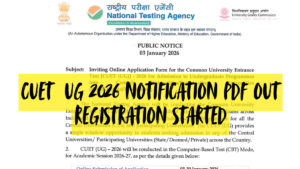Partition of Bengal
Partition of Bengal in 1905: The British Raj conducted the first Partition of Bengal in 1905, which was a territorial reform of the Bengal Presidency. The rearrangement divided the predominantly Muslim eastern regions from the predominantly Hindu western regions. It was announced by Lord Curzon, the then Viceroy of India, on July 19, 1905, and enacted on October 16, 1905, but it was undone just six years later.
The division of Bengal was carried out under Viceroy Lord Curzon’s presidency.
Hindus in West Bengal protested the partition, claiming that it would relegate them to a minority in a region that would include Bihar and Orissa. Hindus were incensed by what they viewed as a “divide and rule” approach, despite Curzon’s assurances that it would increase administrative efficiency. The Muslims were inspired by the separation to build their own national organisation based on communal lines. In reaction to the Swadeshi movement’s riots in protest of the policy, Lord Hardinge unified Bengal in 1911 to assuage Bengali feelings.
Partition of Bengal 1905: The reason for partition and divide and rule policy
This was seen by Bengal’s English-educated middle class as the dismemberment of their motherland as well as a tactic to weaken their power. Lord Curzon refused to agree to Surendranath Banerjee’s proposal that the non-Bengali states of Orissa and Bihar be separated from Bengal rather than fracturing two segments of the Bengali-speaking society. Banerjee conceded that the petitions were ineffectual, and as the partition date approached, he advocated for stronger measures including boycotting British goods. Instead of calling this a boycott, he prefers to call it swadeshi.
Other targets, according to Banerjee, should have been included. Government schools were scorned, and on the day of separation, October 16, 1905, schools and shops were blockaded. Units of the police and army were dispatched to disperse the demonstrators. This was followed by a series of violent clashes. When they learned that John Morley had been nominated as Secretary of State for India, Congress President G.K. Gokhale, Banerji, and others ceased supporting the boycott. They trusted him because they thought he would sympathise with the Indian middle class, and they expected the partition to be reversed through his involvement.
Partition of Bengal Date
On July 19, 1905, The controversy over Curzon’s controversial decision to separate Bengal, as well as the development of the ‘Extremist’ party in the Congress, gave the ultimate impetus for separatist Muslim politics. Separate elections for Muslims and Hindus were created in 1909. Many members of both communities have previously called for national unity among Bengalis. Different political communities arose as a result of separate electorates, each with its own political agendas. Due to their overall numerical strength of roughly twenty-two to twenty-eight million, Muslims also dominated the Legislature. Muslims began to demand the establishment of Muslim-only states.









 NEET UG 2026 Registration: NTA releases ...
NEET UG 2026 Registration: NTA releases ...
 CUET UG 2026 Online Registration Started...
CUET UG 2026 Online Registration Started...
 CUET 2026 Free Batches Launched by CUET ...
CUET 2026 Free Batches Launched by CUET ...














